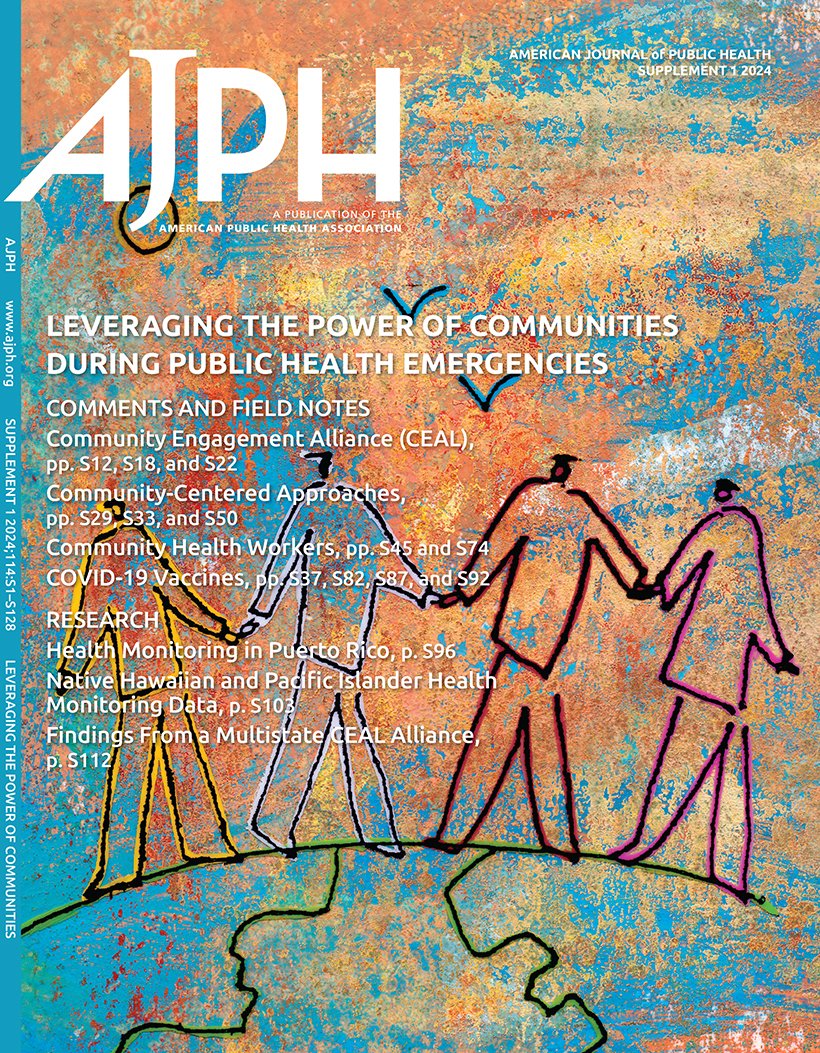Low HIV Preexposure Prophylaxis Coverage Among Women: Focused, Innovative Strategies Can Increase Use-United States, 2017-2023.
IF 9.6
1区 医学
Q1 PUBLIC, ENVIRONMENTAL & OCCUPATIONAL HEALTH
引用次数: 0
Abstract
Objectives. HIV preexposure prophylaxis (PrEP) use has increased since its US Food and Drug Administration approval in 2012. Our objective was to describe trends in PrEP use by US women. Methods. Using national pharmacy and HIV surveillance data, we calculated the PrEP-to-diagnosis ratio (PDR), a measure of PrEP prescriptions each year compared with HIV diagnoses the previous year, for women from 2017 to 2023. We also calculated PDRs in 2023 for the 20 counties with the highest numbers of diagnosed HIV infections among women and reviewed reports of public health activities conducted by recipients of Centers for Disease Control and Prevention HIV prevention funding. Results. The PDR for women was 1.5 in 2017, and it increased to 5.8 by 2023. In the 20 counties with the highest number of diagnosed HIV infections among women, PDRs ranged from 2.2 to 16.9. Counties with the highest PDRs conducted PrEP activities designed for women. Conclusions. PrEP is a highly effective HIV prevention intervention that can empower women to protect their health, but its use has been low. Public health and clinical interventions designed for women can increase their PrEP use and support ending the US HIV epidemic. (Am J Public Health. Published online ahead of print April 24, 2025:e1-e4. https://doi.org/10.2105/AJPH.2025.308056).女性艾滋病毒暴露前预防覆盖率低:重点创新策略可以增加使用率-美国,2017-2023
目标。自2012年获得美国食品和药物管理局批准以来,艾滋病毒暴露前预防(PrEP)的使用有所增加。我们的目标是描述美国妇女使用PrEP的趋势。方法。利用国家药房和艾滋病毒监测数据,我们计算了2017年至2023年女性每年PrEP处方与前一年艾滋病毒诊断的比率(PDR)。我们还计算了2023年妇女确诊艾滋病毒感染人数最多的20个县的pdr,并审查了疾病控制和预防中心艾滋病毒预防资金接受者进行的公共卫生活动报告。结果。2017年,女性的PDR为1.5,到2023年将增至5.8。在被诊断为妇女感染艾滋病毒人数最多的20个县,pdr从2.2到16.9不等。死亡率最高的县开展了专为妇女设计的预防活动。结论。PrEP是一种非常有效的艾滋病毒预防干预措施,可以增强妇女保护自己健康的能力,但使用率很低。为妇女设计的公共卫生和临床干预措施可以增加她们的PrEP使用,并支持结束美国的艾滋病毒流行。公共卫生。2025年4月24日提前在线发布:e1-e4。https://doi.org/10.2105/AJPH.2025.308056)。
本文章由计算机程序翻译,如有差异,请以英文原文为准。
求助全文
约1分钟内获得全文
求助全文
来源期刊

American journal of public health
医学-公共卫生、环境卫生与职业卫生
CiteScore
9.50
自引率
3.90%
发文量
1109
审稿时长
2-4 weeks
期刊介绍:
The American Journal of Public Health (AJPH) is dedicated to publishing original work in research, research methods, and program evaluation within the field of public health. The journal's mission is to advance public health research, policy, practice, and education.
 求助内容:
求助内容: 应助结果提醒方式:
应助结果提醒方式:


